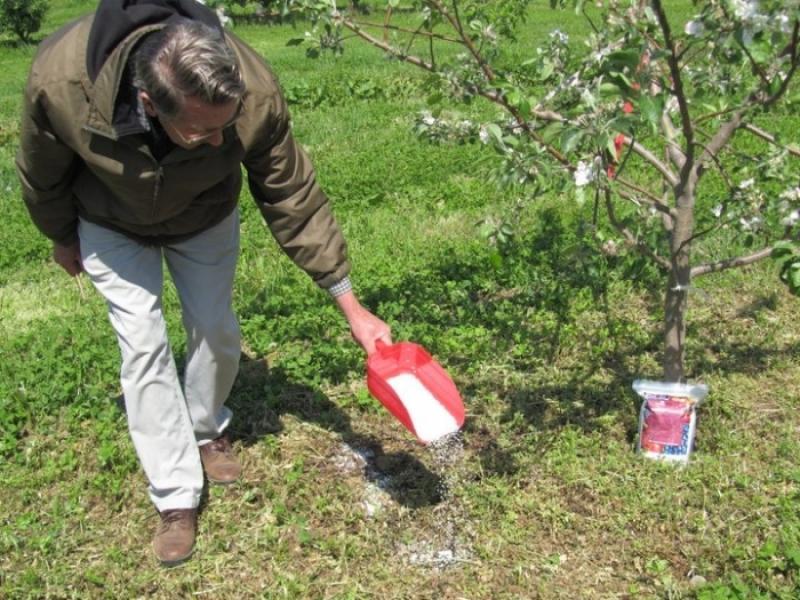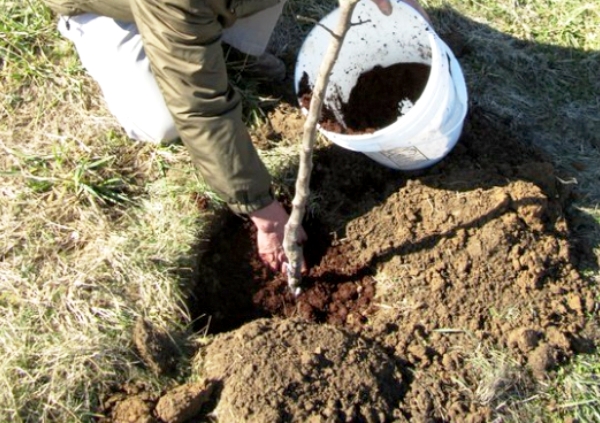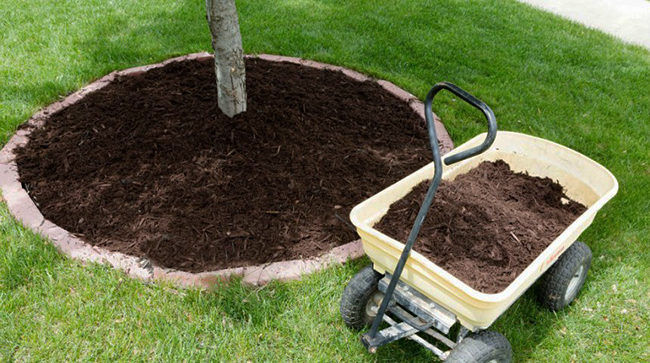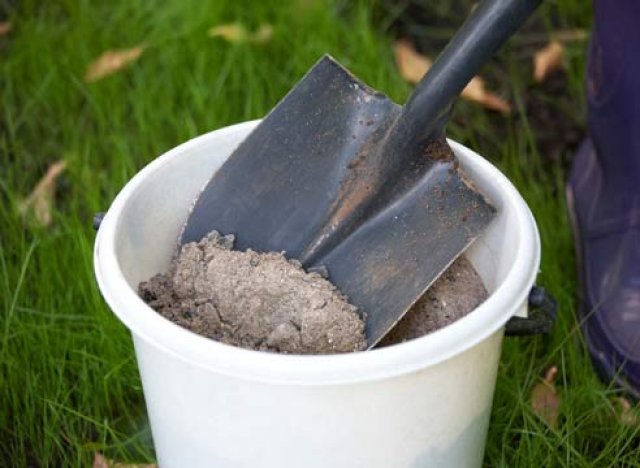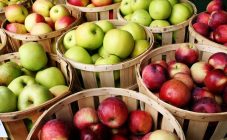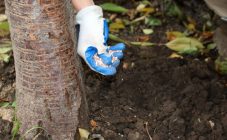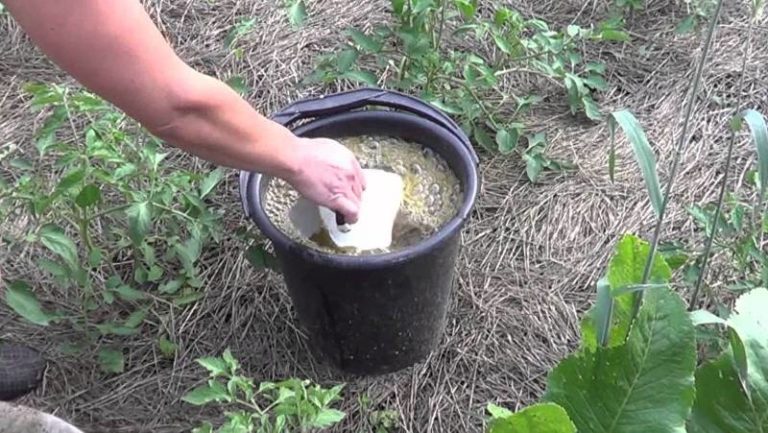Content:
- How to feed apple trees in spring
- Fertilizing a seedling after planting
- Top dressing of an apple tree in the first year of planting
- Top dressing of apple trees in spring
- Top dressing of apple trees in summer
- Top dressing of mature trees
- Territorial features of apple feeding
- Joint feeding for apples, pears, cherries and currants
Feeding apple trees in spring is a necessary care procedure. The correct use of fertilizers will ensure a bountiful harvest. Without this, the soil will eventually deplete, and the tree will age prematurely, give a meager harvest and become more susceptible to pests and fungal diseases. Fertilization depends on the type of soil. Chernozems can do without feeding for the first couple of years. In contrast, clay or sandy soils require regular processing. It is necessary to distinguish between which fertilizers in what way affect the development of the apple tree. Excess is just as harmful as micronutrient deficiencies.
There are several ways to apply fertilizer:
- Dry method: fertilizers are scattered over the surface of the ground around the tree and gradually dissolve, penetrating into the soil. It is convenient to purchase and store such fertilizers in advance;
- Diluted: Water the tree with a ready-made nutrient solution. It is necessary to prepare such a mixture immediately before use due to the impossibility of long-term storage;
- Mulching the base of the trunk. In addition to saturating the soil, it retains moisture and prevents winding.
How to feed apple trees in spring
Feeding should start from the growing season, when the first leaves begin to bloom. In this case, you can only use root fertilizing with nitrogen-containing mixtures. Nitrogen fertilizers activate the ability to grow by stimulating vegetative processes. They are introduced at a distance of 50-60 cm from the trunk. This helps to quickly deliver fertilizers to the overgrown root system, thereby increasing the efficiency of feeding.
You can add to the trunk circle (calculation for 1 tree):
- Urea - 500-600 g, diluted in 50 liters of water;
- Ammonium nitrate solution: 1 tbsp per 1 bucket of water;
- Nitroammofska or superphosphate - 30 g;
- Compost or rotted horse manure - 5-6 buckets;
- Pour mullein with water in a ratio of 1: 3, leave for 2 weeks. Before adding, dilute 1 liter of mullein in 10 liters of water;
- Chicken droppings are infused similar to mullein. Dilute with water 15 times before watering.
You can increase the effectiveness of the listed mixtures by adding 1 glass of ash per 10 liters.
An effective folk remedy for stimulating growth is a mixture of yeast, ash, potassium permanganate, manure and fresh grass:
- Prepare yeast mash: dilute 0.5 kg of yeast with 3 cups of sugar in 9 liters of warm water. Cover with a cloth and leave for a week. Before use, dilute 0.5 l of yeast suspension to 10 l with water;
- A weak solution of potassium permanganate is applied as a fungicidal top dressing;
- A mixture of manure with grass in a 1: 1 ratio, pour 20 liters of water and leave for 2 weeks. Dilute the resulting concentrate 1: 5 with water.
Fertilizing a seedling after planting
Immediately after planting, care consists in systematic watering, loosening the soil and weeding weeds.It is recommended, as long as there is no strong shading from the crown of a young tree, growing green manures with their subsequent embedding in the soil. Mustard and buckwheat work well for this. Clay and sandy soils must be dug up and organic matter introduced. The trunk circle should be regularly tied up with humus or compost, thereby improving the structure of the soil, enriching it with nutrients. Calcareous soils are beneficially influenced by the introduction of potash fertilizers.
Top dressing of an apple tree in the first year of planting
The only fertilization option in the first year is to mulch the root circle with organic matter. The apple tree does not need separate feeding, since it has enough minerals in the planting pit and organic matter in the mulch.
A feature of columnar apple trees is the root system located close to the soil surface. To avoid injury, the mixture should be sprinkled or applied with watering.
Top dressing of apple trees in spring
From the moment the snow melts, apple trees need fertilizers, which help the processes of flowering and the formation of ovaries. Top dressing should be carried out according to the scheme in 3 stages:
- before flowering;
- during the flowering period;
- after the end of the process.
Before flowering, rotted manure left in the fall is used. Cover the soil within a radius of 1 meter from the trunk at the rate of 5-6 buckets per tree. After the leaves open, you can use the foliar fertilization method. For this, the crown and trunk of the tree are abundantly sprayed with a solution of urea.
Do not process on a sunny day - direct sunlight will burn the treated leaves. You should also refrain from the procedure before rainy days, as the solution will be washed off.
In the absence of manure, you can prepare a solution for irrigation from 12 g of urea, 15 g of ammonium nitrate, diluted in 10 liters of water.
How to feed an apple tree during flowering? In the budding phase, Epin's solution is favorable for spraying. It is prepared according to the scheme: 1 ampoule (0.25 mg) per 5 liters of water. Epin is a biostimulant with a pronounced anti-stress effect. Treated plants are more resistant to adverse conditions and bear 10-15% more fruit.
Spraying with Zircon solution (4 drops per 1 liter of water), acting as a fungicide, will reduce susceptibility to diseases such as fusarium, bacteriosis, powdery mildew, late blight and others. Processing must be carried out at the beginning of budding and 14 days after the end of flowering.
As an irrigation, you can use the following composition (for 200 liters of water):
- superphosphate - 1 kg,
- potassium sulfate - 800 g,
- urea - 500 g or 5 liters of poultry droppings.
Insist for 7 days, pour 40 liters per tree.
Top dressing of apple trees in summer
Top dressing of apple trees in summer helps to increase yields and improve keeping quality of fruits. Weak or damaged trees should be fertilized immediately after flowering, healthy plants after flowers fall.
Fruits begin to set at the end of May, increasing the need for sodium fertilizers. For 200 liters of water, you should take 1 kg of nitrophoska and 1 tbsp. sodium humate. It is necessary to use the mixture immediately after preparation, 4 buckets per tree. During the fruiting period, you can make an ash solution: 1 glass per 10 liters of water. So you can feed it every 2 weeks, but stop a month before harvesting. Green fertilizer - infusion of green grass with water (1:10) for 3 weeks will help the fruit to fill up sooner.
In August, you need to completely abandon nitrogen-containing fertilizers by increasing the rates of phosphorus and potassium. Potassium monophosphate in dry form is poured into a groove around the tree and poured abundantly with water.
By adhering to the proposed scheme, you can provide the trees with the correct development and get a tasty and healthy apple harvest.
Top dressing of mature trees
Over time, the requirements of the tree for mineral and organic substances change. Minerals are used only in case of their deficiency (curling or leaf fall). Organic solutions are prepared more concentrated. They should be poured into wells 40-50 cm deep, made with scrap. To improve the delivery of substances to the roots, grooves are dug, 40 cm deep and 30 cm wide. Dry fertilizers are laid in them and covered with earth.
Territorial features of apple feeding
Depending on climatic conditions, the scheme and composition of the applied fertilizers changes.
The Moscow region is characterized by a temperate continental climate with a pronounced seasonality (warm summers, mild winters). In the absence of prolonged dry and rainy periods, a standard fertilization pattern is well suited.
Caring for a garden apple tree in Siberia includes fertilizing with fertilizers and mineral complexes. They compensate the wood for the lack of heat, lighting and other components that are scarce in a harsh climate. In such conditions, apple trees practically do not need watering, unless dry weather has been standing for a long time. By winter, the trunk circle is covered with humus or peat, with a layer of at least 20 cm. The layer should be built up gradually, increasing with each decrease in temperature, so that the plant quietly goes into "hibernation".
In Siberia, fertilizers or top dressing are applied in spring or autumn. In a prolonged dry period, you can also fertilize with nitrogen-containing mixtures. Organic fertilizers are used as additional nutrition. At the same time, in the spring, preference is given to nitrogen-containing complexes, and in the fall - to the rest of the fertilizers. Good results are obtained by spraying the crown of the plant with solutions with micronutrients.
Joint feeding for apples, pears, cherries and currants
For almost all fruit trees, the feeding scheme looks the same. Top dressing for apple and pear trees in the spring includes the same fertilizers in the form of superphosphates, nitrate, urea and ash. For cherries, when preparing mixtures, you should adhere to the ratio of nitrogen / phosphorus / potassium - 3: 1: 4.
In the spring, fertilizing is also mandatory for fruit and berry bushes. Potassium nitrate, urea with ash, manure humus are suitable for them.
The frequency of feeding in these crops coincides with the apple scheme: during flowering, during fruit setting, before wintering.
Summing up, we can say that feeding apple trees directly affects the quality and quantity of the crop. You need to stick to your fertilization plan for nutrition to be effective. Each feeding should be accompanied by abundant watering, and its composition should correspond to the vegetative state of the plant.
